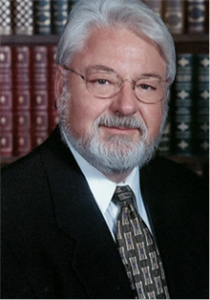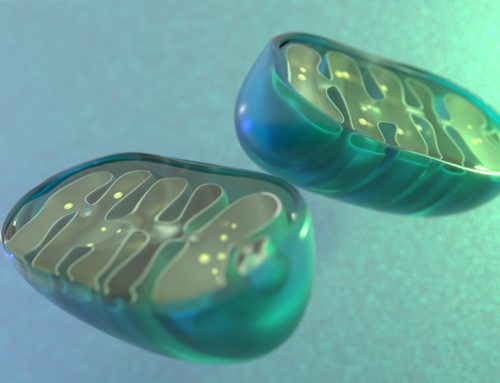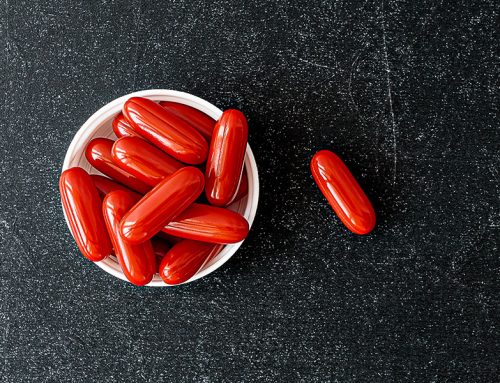
As we get older, we no longer run as fast or jump as high. Millions of us have chronic heart failure and feel tired and out of breath. Millions more take statin medication. Even more millions have high blood pressure. A well-documented ubiquinone Q10 supplement can help to restore the energy production process in the heart muscle cells.
Coenzyme Q10 is an important substance that, if taken in the form of a well-absorbed lipid-based crystal-free ubiquinone Q10 supplement, has documented health benefits. Coenzyme Q10 is an essential bio-nutrient. Coenzyme Q10 in its ubiquinone form plays an essential role in mitochondrial energy production; in its ubiquinol form, it acts as an important antioxidant, quenching harmful free radicals.
Coenzyme Q10 supplementation in the ubiquinone form has been shown to improve chronic heart failure symptoms and survival significantly. Ubiquinone Q10 has been shown to reduce significantly the number of heart disease deaths in elderly people living at home. Ubiquinone Q10 has also been shown to provide improvement in a range of symptoms affecting veterans suffering from Gulf War Illness.
Let’s take a look at some of the key numbers that define Coenzyme Q10.
2 – 3 hours after ingestion: Q10 peaks in the abdominal lymph
The lymph system receives the ingested Coenzyme Q10 from the absorption cells in the small intestine in its oxidized form, the ubiquinone form. In the lymph, the Q10 is converted to its reduced form, the ubiquinol form, and the Q10 is transported to the venous blood.
6 – 8 hours after ingestion: Q10 peaks in the venous blood
Dr. William Judy of the SIBR Research Institute explains that the Q10 enters the blood in the form of ubiquinol. The reason that the Q10 takes 6 – 8 hours to reach its peak concentration in the blood is that the flow of the lymph is relatively slow.
24 hours after ingestion: a second smaller Q10 peak appears
Approximately 24 hours after ingestion, a second smaller peak concentration of Q10 appears. It is thought that the second peak in the blood Q10 concentration graph is caused by the uptake of some of the Q10 from the blood into the liver and, then, by the subsequent secretion back into the blood.
33 hours after ingestion: elimination half-life of Q10
Somewhere between 30 and 35 hours is the typical elimination half-life of the ingested Coenzyme Q10.
7 – 10 days after ingestion: 90% steady-state Q10 concentration
After approximately 7 – 10 days of ubiquinone Q10 supplementation, a 90% level of the steady-state Coenzyme Q10 concentration in the blood will be reached. After 10 – 14 days, steady-state levels will be seen in blood plasma. There will be, of course, considerable variation from individual to individual and from group to group.
2% to 8% single-dose absorption rate for Q10
Typical single-dose absorption rates for Coenzyme Q10 fall in the range of 1% to 3%, according to studies carried out by Dr. Judy at SIBR Research Institute. Dry powder forms of Q10 are poorly absorbed (1% or less). Lipid-based Q10 products typically have an absorption of 2.4 to 3.2 %. The best absorbed Coenzyme Q10 products (crystal free) on the market reach 8% at Cmax in a single-dose absorption test.

Many of the key Coenzyme Q10 figures in this article come from the data compiled by Dr. William Judy, Founder and Chairman of the SIBR Research Institute.
Dr. Judy estimates that the upper limit for single-dose total absorption of Q10 will prove to be approximately 12% to 15% since 15% is the theoretical highest absorption percentage for a molecule the size of Q10 that is absorbed through a passive facilitated diffusion process.
Dose-response effect of Q10 absorption
There is a dose-response effect on Q10 absorption. There will be a higher absorption percentage for a 30 mg supplement than for a 100 mg supplement. There will be a higher absorption percentage of 100 mg of Q10 taken at breakfast and again at dinner than there will be of 200 mg of Q10 taken at one meal.
2.5 micrograms per milliliter: expected Q10 concentration in plasma
Based on his many years of experience, Dr. Judy estimates that 100 mg daily of a well-formulated Coenzyme Q10 supplement should raise plasma Q10 concentrations from a baseline 0.6 – 1.0 micrograms per milliliter range to approximately the 2.5 micrograms per milliliter level.
As I have mentioned above, there is much variation in Q10 absorption levels and in plasma Q10 concentrations among individuals and groups. The figures given here – 0.6 – 1.0 mcg/mL and 2.5 mcg/mL – are perhaps an average figure for middle-aged and elderly Americans.
Such factors as age, body mass, diet, disease condition, ethnic origin, and exercise level are all factors that may affect the Q10 absorption percentage.
Typically, blood Q10 concentrations are expressed in terms of micrograms per milliliter. You may also see the blood Q10 concentrations expressed as milligrams per liter, which expresses the same ratio as micrograms to milliliters, just on a scale 1000 times greater. Some investigators still express plasma Q10 levels as micromoles/Liter.
98% ubiquinone form, then 90-95% ubiquinol form
Dr. Judy’s studies indicate that approximately 98% of the Coenzyme Q10 coming from the intestinal absorption cells into the abdominal lymph is in the ubiquinone form. This is true regardless of whether the Q10 has been ingested in the ubiquinone form or in the ubiquinol form. Q10 ingested in the form of ubiquinol will be converted to the ubiquinone form in the stomach and in the small intestine.
Then, when, eventually, the Q10 passes from the thoracic lymph into the venous blood, the Q10 entering the circulation will be approximately 90% – 95% in the form of ubiquinol. This conversion from ubiquinone to ubiquinol in the lymph is thought to be due to the action of the converting enzymes (the oxy-reductase enzymes) that are released from the epithelial cells in lymph vessels.
1200 mg per day: the observed safe upper limit for daily Q10 intakes
Coenzyme Q10 supplementation is extraordinarily safe and well tolerated. Shults et al have shown that 1200 mg of ubiquinone Q10 daily for up to 16 months is safe. Similarly, the Huntington Study Group has shown that 600 mg of ubiquinone per day is safe for up to 30 months. Beal et al gave 87 patients 1200 mg of ubiquinone Q10 daily and another 86 patients 2400 mg of ubiquinone Q10 daily for a period of 16 months. The treatments with ubiquinone Q10 were well tolerated, and the researchers reported no safety concerns.
30% – 40% increase in brain mitochondrial Q10 levels
In animal studies (mice), researchers have seen a 30%–40% increase in cerebral cortex mitochondrial concentrations of CoQ9 and CoQ10 after 12 months of supplementation. This is evidence that Coenzyme Q10 does cross the blood-brain barrier.
17-step process to synthesize ubiquinone Q10
When our bodies synthetize Coenzyme Q10, there is a complicated 17-step process that is required for the production of the Q10 molecules. To be effective, this process requires adequate bioavailability of vitamin B6. After we reach our mid-20s, our bodies make less Coenzyme Q10 with increasing age; hence, the need for a good daily Q10 supplement. There is not enough Q10 absorbed from food to meet an adult person’s need for approximately 3.2 – 3.5 micrograms of Q10 per day.
2-step process to produce ubiquinol
Ubiquinol is produced in the body in the conversion of ubiquinone to ubiquinol through the action of the NQO-1 enzymes (oxy-reductase enzymes). This redox conversion is basically a two-step process: ubiquinone to semi-ubiquinone to ubiquinol. Because Coenzyme Q10 is a redox molecule, ubiquinol gives up two electrons to quench harmful free radicals, and, in the process, is converted back to the ubiquinone Q10 form.
43% decrease in cardiovascular death in the Q10 group compared to the placebo group
In the Q-Symbio study, adjunctive treatment of chronic heart failure patients with 300 mg daily of a ubiquinone Q10 supplement resulted in statistically significant reductions in cardiovascular deaths and all-cause deaths, in the number of major adverse cardiovascular events, and in the number of hospitalizations. Thus, Q10 supplementation in addition to conventional therapy should reduce the number of acute re-hospitalizations significantly.
54% reduction in cardiovascular-related deaths in the Q10/selenium group
In the KiSel-10 study, supplementation with 200 mg of ubiquinone Q10 and 200 mcg of an organic selenium yeast product produced a significant reduction in cardiovascular-related mortality and significant improvement in measures of heart function, again as compared to the placebo group.
The numbers speak for themselves. Ubiquinone Q10 supplementation is necessary and beneficial for good heart health.
Sources:
Alehagen, U., Johansson, P., Björnstedt, M., Rosén, A.,& Dahlström, U. (2013). Cardiovascular mortality and N-terminal-proBNP reduced after combined selenium and coenzyme Q10 supplementation: a 5-year prospective randomized double-blind placebo-controlled trial among elderly Swedish citizens. International Journal Of Cardiology, 167(5), 1860-1866.
Beal, M. F., Oakes, D., Shoulson, I., Henchcliffe, C., Galpern, W. R., Haas, R., & … Boyar, K. (2014). A randomized clinical trial of high-dosage coenzyme Q10 in early Parkinson disease: no evidence of benefit. JAMA Neurology, 71(5), 543-552.
Golomb, B. A., Allison, M., Koperski, S., Koslik, H. J., Devaraj, S., & Ritchie, J. B. (2014). Coenzyme Q10 benefits symptoms in Gulf War veterans: results of a randomized double-blind study. Neural Computation, 26(11), 2594-2651.
Huntington Study Group. A randomized, placebo-controlled trial of coenzyme Q10 and remacemide in Huntington’s disease. Neurology. 2001;57(3):397-404
Judy, W.V., Stogsdill, W.W., Judy, D.S., & Judy, J.S. (2007). Coenzyme Q10: Facts or Fabrications? Natural Products Insider. Retrieved from http://www.zmc-usa.com/docs/CoQ10_Facts_or_Fabrications.pdf.
Matthews, R. T., Yang, L., Browne, S., Baik, M., & Beal, M. F. (1998). Coenzyme Q10 administration increases brain mitochondrial concentrations and exerts neuroprotective effects. Proceedings of The National Academy Of Sciences Of The United States Of America, 95(15), 8892-8897.
Mortensen, S. A., Rosenfeldt, F., Kumar, A., Dolliner, P., Filipiak, K. J., Pella, D., & … Littarru, G. P. (2014). The effect of coenzyme Q10 on morbidity and mortality in chronic heart failure: results from Q-SYMBIO: a randomized double-blind trial. JACC. Heart Failure, 2(6), 641-649.
Shults CW, Oakes D, Kieburtz K, et al. Effects of coenzyme Q10 in early Parkinson disease: evidence of slowing of the functional decline. Arch Neurol. 2002;59(10):1541-1550.









Leave A Comment